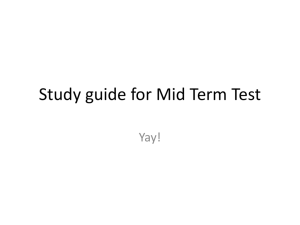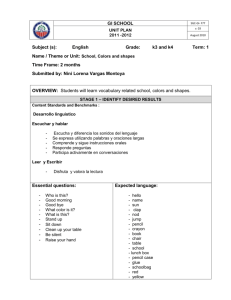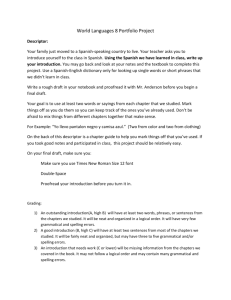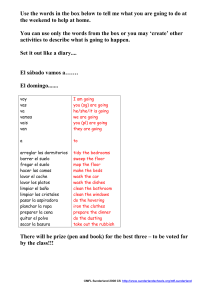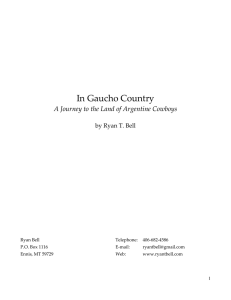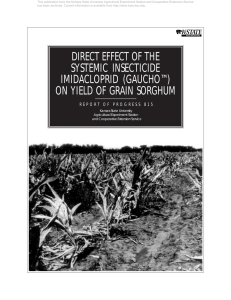Culture
advertisement
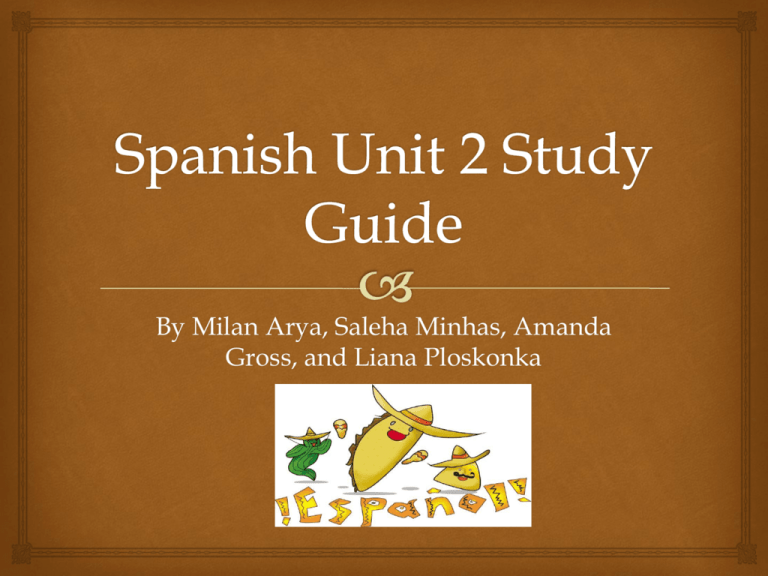
By Milan Arya, Saleha Minhas, Amanda Gross, and Liana Ploskonka Adverbs (-mente) English adverbs end in –ly, but in spanish adverbs can be formed by adding –mente. Ex: Rápido Rápida Rápidamente Frequente Frequentemente Fácil Fácilmente Preterite -ir, -er Comer Yo comí Tú comiste Usted/él/ella comió Nosotros comimos Vosotros comisteis Ustedes/ellos comieron Escribir Yo escribí Tú escribiste Usted/él/ella escribió Nosotros escribimos Vosotros escribisteis Ustedes/ellos escribieron Demonstrative Pronouns Demonstrative Adjectives Close M. F. Not close Far Away M. F. M. Singular Este Esta this this Ese that Esa that Aque l that Plural Estos Estas these these Esos those Esas those Aquell os those F. Aquella that Aquellas those Demonstrative adjectives appear before nouns. They agree in gender and number with the noun they describe. Ex: ¿Cuanto cuesto este anillo? How much does this ring cost? Demonstrative pronouns take the place of nouns. They agree in gender and number with the noun they replace. Ex: ¿Cuánto cuesta éste? How much does this one cost? Pensar What does it mean when it is followed by an infinitive? To plan or to plan on Examples Pienso acostarme temprano esta noche. I plan to go (on going) to bed early tonight. Reflexive Verbs Yo Tú Usted, Él, Ella Nosotros Ustedes, Ellos, Ellas Me Te Se Nos Se Reflexive Verbs (Cont.) ¿A qué hora quieres _____________? Despertarme Despertarse Despertarte Despertarnos Reflexive Verbs (Cont.) ____ quiero despertar a las siete. Se Me Te Os Present Progressive Ar Er Ir -ando -iendo -iendo Present Progressive (Cont.) Estoy comprando las toallas. I am buying towels. ¿Qué estás comiendo? What are you eating? Present Progressive (Cont.) If an –er or –ir verb ends with a vowel, “iendo” changes to “-yendo” Example: leer -> leyendo Present Progressive (Cont.) Some verbs have a change in the first vowel e -> i o -> u Decir -> Diciendo Dormir -> Durmiendo Present Progressive (Cont.) Esta _______ una pulsera. Comprando Championship El campeonato Bicycle racing El ciclismo Competition La competencia To compete Competir (i) To be tied Estar empatado To play on a team Jugar (ue) en equipo To score a goal Meter un gol Prize; award El premio Track La pista Net La red Uniform El uniforme Oh please! Ay, por favor Bravo Bravo Come on! Dale! Ugh! Uy Its important Es importante It’s good Es bueno Its necessary Es necasario To exercise Hacer ejercito To stay in shape Mantenarse (ie) en forma healthy:; healthful Saludable To follow a balanced diet Seguir (i) una dieta balanceada The world cup La copa mundial The olympic games Los juegos panamericanos The panamerican games Los juegos panamericanos The tour de France La vuelta a Francia Active Activo(a) Sportsman/woman El(la) deportista Slow Lento(a) Muscular Musculoso(a) Fast Rapido(a) To go to bed Acostarse (ue) To shave oneself afeitarse To turn off the light Apagar la luz To get ready arreglarse To take a bath banarse To brush one’s teeth Cepillarse los dientes To wake up Despertarse (ie) To fall asleep Dormirse(ue) To take a shower Ducharse To turn on the light Encender(ie) la luz To train Entrenarse To wash oneself lavarse To get up Levantarse To put on makeup Maquillarse To comb ones hair Peinarse To put on clothes Ponerse la ropa To dry oneself Secarse Routine La rutina To be in a hurry Tener prisa To be sleepy Tener sueno Face La cara Elbow El codo Neck El cuello Finger El dedo Toe El dedo del pie Tooth El diente Throat La garganta Shoulder El hombro Wirst La muneca Inner ear El oido Nail La una Brush (toothbrush) El cepillo (de dientes) Shampoo El champu Shaving cream La crema de afeitar Deorderant El desordorante Soap El jabon Toothpaste La paste de dientes Comb El peine Hair dryer El secador de pelo Towel La toalla First Primero Then; so Entonces Later: then Luego Later on Mas tarde Finally Por fin Sometimes A veces Frequently Frecuentemente In general: generally Generalmente Usually; normally Normalmente Argentina Facts Population: 40 million Capital: Bueno Aires Currency: Peso Argentino Language: Spanish Typical foods: alfajores, matambre, asado Famous people: Norma Aleandro (actor), Jorge Luis Borges (writer), Julio Cortazar (writer), Juan Maldacena (physicist), Mercedes Sosa (singer) It has the most Hispanics in the world. Que es… La Boca? A neighborhood in Buenos Aires. It has many colorful houses and many artists live there. You can visit museums, buy art and artifacts, and watch music shows and tango dances. A street more famous than La Boca is called Caminito. Que es… La Patagonia? A region very popular among tourists that go on adventures and participate in extreme sports. Its climate and height are varied. Many people camp, go kayaking around glaciers, go to the beach, go on excursions on the mountains, and watch animals such as penguins and condors. Que es… Vos? Argentinians use the form ‘vos’ instead of the form ‘tu’. Some examples of this being used: Vos queres (tu queres) Vos sos (tu eres) Vos te llamas (tu te llamas) Cuales son… Los cantos deportivos? Sport chants that unify members of a community. They are used in football games in Argentina and Spain. An example of a chant used in Argentina: ¡Soy de River soy Y de la cabeza siempre estoy, Soy de River soy Y de la cabeza siempre estoy, Llora Avellaneda, la Boca y el Ciclon, Porque River ya sale campeon! Quien es… Antonio Berni? Antonio Berni is a painter from Argentina. Many of his paintings reflect the life in Argentina. His preferred sports team was Club Colón of Santa Fe, Argentina. Berni shows the importance of sports to young people through his representation of the boys from Club Colon in an Argentinian neighborhood. Quien es… Xul Solar? Xul Solar was considered a visionary. He was a painter, sculptor, poet, and inventor. He invented two poetic languages and a game. Many of his paintings seem to represent other universes. One of his paintings, Bri Pais – Genti has bright colors and includes images of the sun, the moon, and other geometric shapes. Que es… Copetin? Copetin is a comic strip popular in Colombia. It is about a mischevious, but kind boy that lives in Bogota. He passes a lot of time with his group of friends in his neighborhood. Both children and adults like this comic because of its ideas, unique personalities, and humor. Cuales son… Los gauchos? A gaucho, or a cowboy, lives the life of a cattle rancher. The region of the gaucho is La Pampa, a land with a lot of sun and prairies. The conditions of La Pampa decide the gaucho’s day-today life. The gauchos get up early to look after cattle and to maintain the ranches. Cuales son… Los gauchos? The salary of the gaucho is in the meat and skin of the cattle sold. For work, the gauchos wear a big sombrero to protect against the sun, wind, and rain. They wear pants called ‘bombachas’ and tall boots. At home, they eat what they produce, such as beef. Cualos son… Los cafeteros? The mountains of Colombia are ideal for cultivating coffee: it is humid, tall, and fresh. Coffee is very important in Colombia and is famous throughout many places. Colombian coffee farmers, or cafeteros, have to constantly work the land. In the typical day of a cafetero, they must get up very early and sleep very early every day. Cuales son… Los cafeteros? They wake up between two and four in the morning every day. When they go out, they wear a big hat and ride mules. They go to the fields to cultivate and maintain the coffee plants. Much later, they remove the coffee beans to be used for products.

